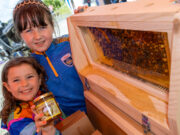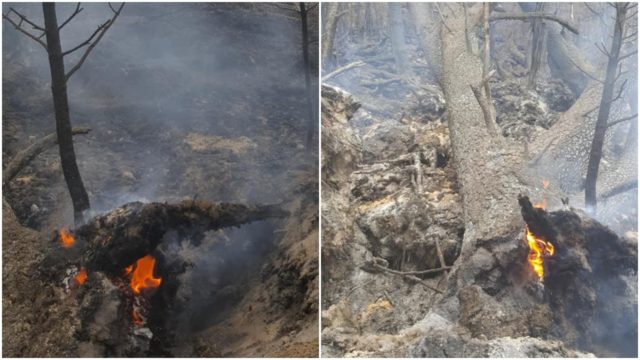There are real fears for a variety of animals who live in the Slieve Bloom Mountains following the devastating fire which has raged there.
Deer, hens, frogs and lizards are among those most at risk according to the Slieve Bloom Association who say that between 400 and 500 acres of bog have been destroyed.
In a statement on their Facebook page, they outlined the scale of the damage.
Ricky Whelan – Project Officer, BirdWatch Ireland and Chairman, Irish Wildlife Trust Laois-Offaly Branch spoke to The Slieve Bloom Association in relation to concerns for wildlife following large fires in the Slieve Bloom Mountains.
He said: “Wildlife Conservationists have concerns for wildlife following a large fire in the Slieve Bloom Mountains which burned over a period of days recently.
“The fire managed to burn large tracts of Coillte plantation forestry and also destroyed Blanket Bog and Scrub habitats in the area between the Cut Nature Reserve and the “Booster Station”. C400-500acres of Blanket Bog have been affected.
“Much of this area is part of the Slieve Bloom Special Protection Area (SPA) which is designated under the European Birds Directive to protect rare and vulnerable species which breed in the area.”
He outlined the animals which he feels are most at risk.
Ricky said: “Hen Harriers are predominantly a ground nesting species, they nest amongst heather in our uplands which makes the chicks vulnerable to these fires.
“It is believed that a number of Hen Harrier nests were/are still active at the time of the fire and it is not clear if any have been negatively affected as a result.
“Other species such as Red Grouse are considered rare and vulnerable. Red Grouse adults eat heather almost exclusively so the loss of 400 to 500 acres of suitable habitat will affect this population by reducing the availability of food locally. These birds are sedentary, meaning they remain in the same area their entire lives and will not move far to find new food sources.
“There are large numbers of deer that roam the mountain. Fallow deer give birth to fawns in June and young are left hidden in vegetation during the day whilst the female grazes.
“The fire came right at a time when many fawns will be on the mountain and may have been separated from their mothers leaving them orphaned.
“Saying that, if you come across a fawn lying in thick cover alone it can just be left there by mum who will return later to feed. Young deer, unless you are certain are abandoned, should be left alone.
“Less mobile fauna such as frogs and lizards will probably have suffered most, young hares too (although peak breeding season is over) may have suffered in the fire.”
Plant life is also in trouble.
He said: “The fire will have also destroyed all plants in its path. These plants together make up complex habitats that can take years to recover and re-establish.
“Depending on how fast the fire burned it can often destroy only the surface layer leaving the soil and the seed layer intact meaning that the habitat will recover much more quickly.
“This remains to be seen how badly the fire will affect the habitat overall but certainly in the short to medium term its bad news all round.”
SEE ALSO – Emotional send off for ‘amazing teacher’ on retirement























